William Davis's Blog: Dr. Davis Infinite Health Blog, page 146
February 10, 2015
The Wheat Belly Lifestyle: A reason to buy new shoes
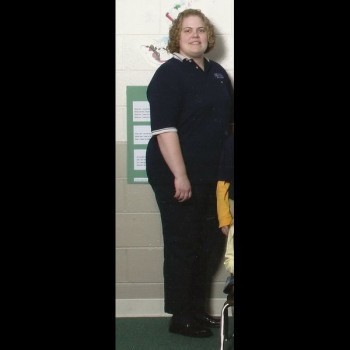

The story of a 41-year old woman, Rebecca, was detailed in an Atlanta Journal Constitution article.
“I attribute most of my weight-loss success during this last year to eliminating grains … not only am I at the lowest weight since the fourth grade, but my blood pressure has been reduced, resulting in the elimination of most medications. My cholesterol numbers have improved. My IBS symptoms are gone. The joint pain in my hips and hands are gone. My seasonal allergies are gone. A mysterious, recurring skin rash is gone. I’ve had to buy a whole new wardrobe, including shoes because my feet also shrunk. I’m way more energetic and can do more with my toddler. The Wheat Belly lifestyle has not required a great amount of exercise to aid in weight loss, but exercise is still important for heart health. I enjoy walking.”
Count calories and do seasonal allergies go away? Count points and will this reverse irritable bowel syndrome bloating and diarrhea? Push the plate away and eat smaller portion sizes and will joint pain recede?
You get the idea: The Wheat Belly lifestyle is primarily about taking back control over health. While it’s weight loss like Rebecca’s stupendous 114 pounds that makes headlines, the weight loss is really just one manifestation of improved health–massively improved health.
Anyway, the Wheat Belly lifestyle will continue to make headlines because of one good reason: It works.
The post The Wheat Belly Lifestyle: A reason to buy new shoes appeared first on Dr. William Davis.
February 9, 2015
What Do Measles, Tuberculosis, and Grains Have in Common?
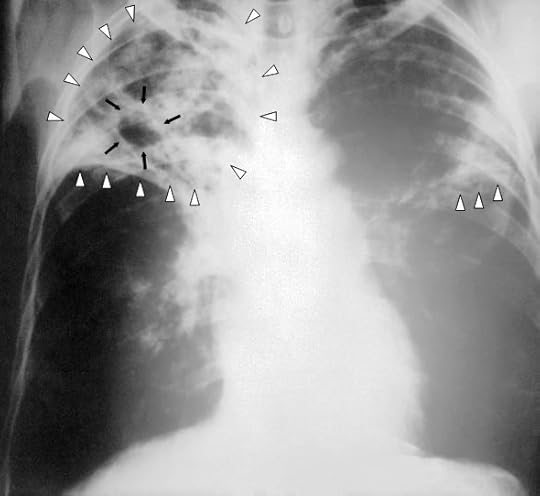
What do measles, tuberculosis, and grains have in common? For that matter, what do anthrax, influenza, and brucellosis also share in common with grains?
All the conditions listed are examples of zoonoses, i.e., diseases contracted by humans from animals. When humans first invited domesticated grazing creatures–cows, sheep, goats–into our huts, adobe homes, or caves, often sleeping in the same room, using them for milk or food, we acquired many of their diseases. These diseases were essentially unknown prior to the human domestication of grazing ruminants.
The process of animal domestication changed the course of human civilization, providing a source of calories from their meat and organs, products made from the milk from their mammary glands, and led to the technology of fermentation, cheesemaking, and even to putting at least some of these animals to work as beasts of burden. And so did the acquisition of zoonoses from the same animals, such as the massive epidemics of tuberculosis that have plagued humans.
Grazing ruminants graze on grasses. Curiously, the human consumption of the seeds of grasses–i.e., “grains”–coincides with the domestication of grass-grazing ruminants. It is therefore tempting to speculate that the period of global climate change (increased temperature and dryness) recorded by geologists that caused a shortage of food for humans approximately 9000-12.000 years ago provided the motivation for hungry, desperate humans to observe the eating behavior of grass-grazing domesticated ruminants and ask, “Can we eat that, too?”
It is no small matter for humans to consume grasses. If it were einkorn wheat, the ancestor of all modern wheat, or teosinte, the ancestor of modern corn, for instance, try as we might, we cannot eat the roots, stalk, or leaves. Hungry, desperate humans figured out that, if we separated the seed from the husk, dried it, pulverized it (using stones), then added water and heated it, they could be consumed as porridge. Later, the Egyptians figured out that the pulverized seeds could be brewed into beer, or mixed with water and yeast (mixed with beer?) to make bread. They did not know, of course, that, despite being edible, the seeds of grasses remained largely indigestible–most of the proteins of grains cannot be digested by humans as we lack the enzymes to break apart the (proline-rich) amino acid sequences of proteins from grains. This explains why, for example, wheat germ agglutinin (in wheat, rye, barley, and a small quantity in rice) is 100% indigestible, passing from mouth, through the gastrointestinal tract, and out the anus untouched by human digestion (though doing plenty of damage in the process of coursing through, as well as the destruction wrought by the microgram quantities absorbed into the bloodstream). It also explains why the gliadin protein (of wheat, rye, barley, and probably the zein of corn) can remain intact and initiate the diseases of autoimmunity, such as rheumatoid arthritis and multiple sclerosis. (The indigestible proteins of the seeds of grasses provides the basis for many of the arguments made in my new book, Wheat Belly Total Health.)
The domestication of ruminants therefore coincides with the effort to try to consume the seeds of grasses, both relatively recent developments in human adaptation on earth.
So much of the modern human dietary and health experience therefore relates to the act of domesticating grazing ruminants. Without them, human civilization would have taken an entirely different course with less successful population growth, less technological advancement (as Dr. Jared Diamond argues in Guns, Germs, and Steel), fewer infectious disease epidemics. However, understand these anthropological and sociological issues and you are provided important insights into the human dietary and health experience. We can eat the organs and flesh of grazing ruminants as surrogates for wild game, but we should not sleep in the same rooms as they do. We most certainly cannot eat the same way they do, trying to survive on the products of grasses, AKA grains.
Ironically, the mistake we made all those thousands of years ago, a mistake certainly excusable given desperation, is now celebrated as the foundation of all modern dietary advice: “Eat more healthy whole grains.” This is truly one of the biggest blunders ever made in diet and in health for us non-ruminants. We’ve largely conquered tuberculosis and measles, but we embrace the practice of consuming the seeds of grasses.
The post What Do Measles, Tuberculosis, and Grains Have in Common? appeared first on Dr. William Davis.
February 8, 2015
You won’t recognize Jennifer
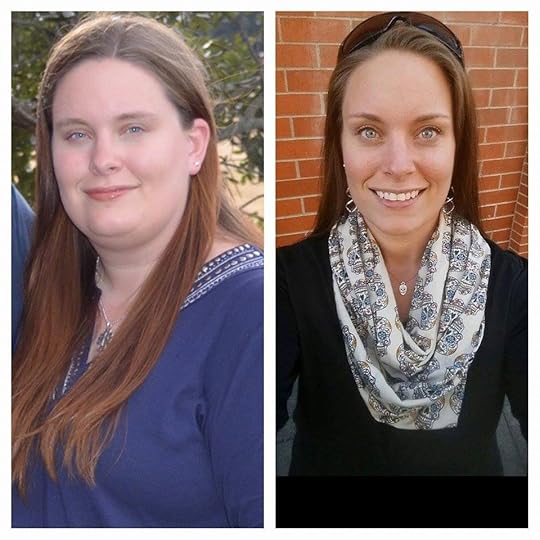
Jennifer provided an update after a year and a half on the Wheat Belly lifestyle:
“A year and a half wheat-free and I am now down 113 pounds!
“Going wheat-free has been a life changer. At my worst, I was experiencing heartburn, foot pain and swelling, back pain, coughing and headaches. I was afraid to go to the doctor for fear of what he would tell me. The wheezing has stopped, I sleep better at night and I am not having foot pain and swelling. The headaches and heartburn have disappeared completely. I went from not being able to tie my own shoes without getting out of breath to running and working out at Crossfit. Going wheat-free and Paleo has given me the opportunity to live a normal, active life again and to enjoy playing soccer with my kids!”
I believe it is no exaggeration to say that Jennifer’s life has been transformed by her wheat-free lifestyle. Before she engaged in this lifestyle, she was clearly experiencing joint and airway inflammation, disruption of gastrointestinal health, headaches, and was impaired by weight. Look at her now: I’m sure that family, friends, and neighbors barely recognize her!
Jennifer chose to combine her wheat-free lifestyle with some of the additional “paleo” restrictions and exercise, though those added strategies are not always necessary to achieve such extravagant results.
Be sure to add your congratulations to Jennifer here and on the Wheat Belly Facebook page!
The post You won’t recognize Jennifer appeared first on Dr. William Davis.
February 7, 2015
Holly’s life was changed through the Wheat Belly lifestyle
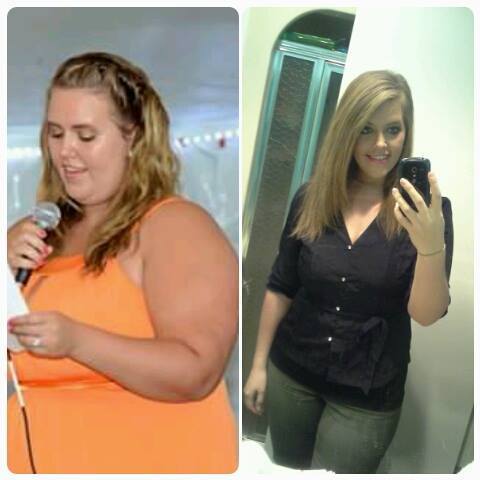
Holly shared this update on her ongoing Wheat Belly lifestyle experience.
“Started September, 2013 and still going strong. The increased self esteem may very well be my favorite part!”
By eliminating wheat and grains from her life, Holly has taken back control over health and weight. Not only has she lost a dramatic quantity of weight, she has regained control over health-destroying factors such as inflammation, autoimmunity, joint destruction, gastrointestinal disruption, and mind and emotional effects. Remove wheat and grains and the natural state of human health is restored, since wheat and grains should never have been part of the human dietary experience in the first place.
This is what I love most about the Wheat Belly lifestyle: it returns control over health and weight back to you. It means you are no longer reliant on the mismanagement and blundering of the medical system, prescription drugs, hospital procedures–you are healthier, naturally.
The post Holly’s life was changed through the Wheat Belly lifestyle appeared first on Dr. William Davis.
February 5, 2015
Another spectacular Wheat Belly work-in-progress
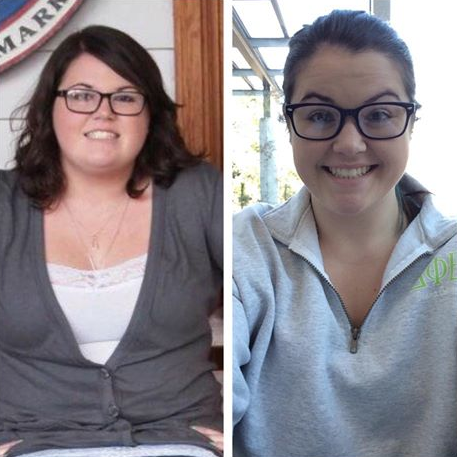
Nikki posted a wonderful Wheat Belly lifestyle transformation that highlights how dramatic the facial changes can be.
“You can definitely see the improvement in my face. So far, I’ve lost around 30 pounds since I stopped eating wheat back in October, 2014. On the left was when I was at my heaviest and on the right is me now and still powering on with staying off wheat and exercising daily.
“Hopefully by May I will be able to lose the remaining 25 pounds that I have left to go.”
Nikki combined her Wheat Belly lifestyle with exercise though, while beneficial for many reasons, exercise is not necessary to achieve the health benefits that result from living without wheat or grains. Though lighting in these “selfies” is always a struggle, I believe we can make out the facial redness and puffy edema in Nikki’s “before” photo that is the signature appearance of wheat and grain consumption, gone in Nikki’s “after” photo.
If there is inflammation and edema in the face, then there is inflammation in other body parts, such as the ankles, the abdomen, even internal organs like the liver and brain. This is because wheat and grains have several indigestible or partially-digestible proteins that exert marked inflammatory effects: gliadin, gliadin-derived peptides, gliadin-initiated entry of bacterial lipopolysaccharide, wheat germ agglutinin, and the inflammation promoting effects of high blood sugar and insulin provoked by grain amylopectin A are among the components of grains that contribute to such effects.
Yes, you could follow the lead of conventional healthcare and find a drug for every manifestation of wheat and grain consumption. . . or you could just stop eating them.
For a full discussion on how to fully reverse wheat and grain provoked inflammation with effort that go beyond wheat and grain elimination, see the new Wheat Belly Total Health.
The post Another spectacular Wheat Belly work-in-progress appeared first on Dr. William Davis.
February 4, 2015
Joanne UNRECOGNIZABLE after saying goodbye to wheat and grains

Joanne shared these wonderful photos chronicling her two-year Wheat Belly experience.
“Top two pictures ‘before,’ bottom two are my ‘after’ shots. Took two years, but down 45 pounds and counting. I feel the best I ever have!
“Thanks Dr. Davis!”
This is fairly typical around this Wheat Belly neighborhood: people lose weight, yes, but they also undergo a fairly astounding transformation in facial appearance, so much so that we have the occasional naysayer who (incredibly) accuses me of looking for a heavier, unhealthy person and a similar-looking slender, healthy person and calling them “before” and “after.” Hardly.
I believe that the often astounding outward facial changes reflect the equally dramatic internal changes: gastrointestinal healing, reversal of abnormal intestinal “leak” that drove inflammation and autoimmunity, the drop in insulin and blood sugar levels, neurological healing, reversal of joint inflammation, and on and on. There is no sleight-of-hand nor Photoshopping in any of this; just dramatic reversals of the destructive health effects of wheat and grains, pure and simple.
The post Joanne UNRECOGNIZABLE after saying goodbye to wheat and grains appeared first on Dr. William Davis.
February 3, 2015
Which photos shows Jean BEFORE she gave up wheat and grains?

Jean posted this astounding facial transformation after saying goodbye to all foods made with wheat and grains. Can you guess which photo was “before,” which “after”?
Those of you following these conversations know the answer: the photo of Jean on the right is before she removed all wheat and grains, the left 6 months after their removal. Thinner, yes, but truly transformed in appearance. In Jean’s own words:
“I took some time tonight to put together some before and after pics. I was shocked to see the effects that wheat had on my appearance! I can’t believe how great I feel. It’s been 6 months and I’m halfway to my goal weight and on my forever journey of this way of life. 50 pounds gone forever. Life is good. Thanks Dr Davis!”
The Wheat Belly lifestyle can be viewed as a weight loss maneuver. But it is really a means of regaining health, health that is revealed on the face and skin.
The post Which photos shows Jean BEFORE she gave up wheat and grains? appeared first on Dr. William Davis.
Kerri on her way to perfect health

Kerri shared her story of weight loss and health following the Wheat Belly lifestyle, including an important lesson in wheat/grain re-exposure reactions:
“I wanted to share my story of eliminating wheat and other processed foods. In January 2014, I was 242 lbs. and, at 5’4″, I was morbidly obese. I knew I needed to make changes.
“In April, I turned 50 and I made up my mind to lose 50 lbs. during this year. I am very proud to say that I lost 60 lbs.
“The biggest loss of weight happened after I read Wheat Belly and eliminated all gluten and grains. Twice during holiday parties, I found myself eating small amounts of wheat, but even eating small amounts caused sinus infections.
“I can honestly say that I don’t miss eating gluten and grains!”
Kerr’s re-exposure reaction to even small quantities of grains was sinus congestion/infection. For others, re-exposure brings on bloating, diarrhea, mind “fog,” appetite-stimulation that lasts several days, headaches, or a recurrence of the health problems that had receded with wheat/grain elimination, such as autoimmune joint swelling.
This is part of the reason that, once they begin this lifestyle, people stick with it: they get sick when they “indulge” or go off the lifestyle. There is no question that many people build up partial–but never total–tolerance to the adverse effects of wheat and grains making, for instance, the diarrhea of grain consumption less problematic with chronic consumption. Once you are free of wheat and grains, you lose your partial tolerance within several weeks and any re-exposure can bring on all manner of reactions in full force. (I’ve even seen people go to the emergency room with severe re-exposure reactions, telling themselves that the couple of pretzels they had at the Superbowl party, for instance, couldn’t hurt . . . until their finger joints swell, they have terrible abdominal pain, or hurt themselves in a fitful grain-induced rage. Yup, it happens.)
Peel back the fictions surrounding wheat and grains, layer by layer, and you begin to discover just how far off conventional dietary advice can be. But by doing so, you also discover how wonderful life and health can be, just as Kerri has.
The post Kerri on her way to perfect health appeared first on Dr. William Davis.
February 2, 2015
Jennifer’s over-the-top Wheat Belly success

Jennifer is wild for the Wheat Belly lifestyle after just her first 4 weeks. Here are her recent comments:
“Before Wheat Belly, my blood pressure was 180/90 on 3 meds!
“I was on Lisinipril for 8/9 yrs. Had a bad reaction and spent 2 days in the hospital with a transfusion to get it out of my system. Thought I was dying! Ambulance and the whole thing. I told myself in that hospital bed I’m done. I want to NEVER rely on meds again. Then I was on 100 mg Metropolol, 5 mg Norvasc, 12.5 mg HCTZ, 100 mg Zoloft, and 25 mg Vistaril as needed for anxiety.
“Thanks to you, Dr. D, I have a life again with my 7-year old son. I don’t have panic attacks. My BP is low and I have energy, no knee joint pain. And I’m not hungry! LIFE IS SO GOOD.
“Today, I take the HCTZ and 50 mg Zoloft. BP 120/60 and I can walk without my knee/joints hurting. OMG SOOOOOOOO many things are good! I’m weaning off Zoloft slowly and soon will be off all meds. I go to the cardioligist next week for a check up again for heart palpitations (which are non-existent anymore). I think it’s the last time Ill be going, I’m sure. Oh, and 20 lbs of crap GONE!”
Think of it: Jennifer was clearly being treated with several, not-very-benign medications to subdue the consequences of eating wheat and grains. Suppressing symptoms such as panic attacks with medications is never as healthy as REMOVING THE CAUSE. Not only did her joint pain disappear with wheat/grain elimination, not only has her blood pressure trended down substantially, but she lost 20 pounds without reducing calories, exercising like mad, or any other weight-losing maneuver.
This is the astounding power of the Wheat Belly wheat- and grain-free lifestyle to restore health.
The post Jennifer’s over-the-top Wheat Belly success appeared first on Dr. William Davis.
Mind your minerals
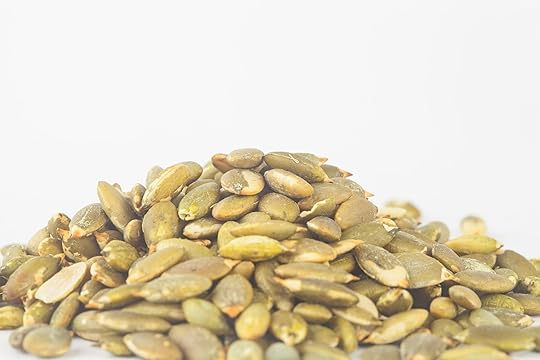
Absorption of positively-charged minerals, especially iron, zinc, and magnesium, is blocked by the phytates of grains. It means that every time you include a grain in your meal–as advised by our own USDA and other health agencies–you effectively turn off absorption of essential minerals. Obviously, with frequent grain consumption, nutritional deficiencies develop.
You could try and remedy this situation by consuming grains while supplementing minerals, hoping to overcome the effect, but this usually does’nt work to fully compensate for blocked absorption, while also exposing you to all the other destructive effects of wheat and grains. This is how it is done, of course, in conventional circles, or deficiencies are simply overlooked or ignored.
The phytate content of a bagel or two slices of whole wheat bread is enough to block iron absorption by 90%. Iron deficiency results in fatigue, lightheadedness, feelings of being cold, and poor physical performance. The second most common worldwide cause for iron deficiency anemia is grain consumption, second only to blood loss (e.g., menstrual cycles). (The World Health Organization knows all about this phenomenon, as they must contend with iron deficiency that develops when grains are shipped in to relieve hunger in Third World regions.) Wheat and grains are very common causes for “unexplained” iron deficiency anemia that fails to fully respond to iron supplementation, rebounding back to normal with grain elimination.
Zinc deficiency can manifest in myriad ways, but most commonly results in skin rashes (often misdiagnosed as seborrhea, eczema, or other rashes), itchiness, a white coating on the tongue, impaired growth and impaired learning in children, reduced sense of taste and smell, and gastrointestinal distress. Magnesium deficiency shows as muscle cramps in the fingers or “charlie horses” in the calves, higher blood pressure and blood sugar, loss of bone density, and heart rhythm disorders.
Mineral absorption improves dramatically with wheat and grain elimination–that is the essential first step. (You now appreciate the folly of bread “fortification” and the futility of taking mineral supplements in the presence of grains in the diet.)
Iron is best managed by checking a blood level of ferritin (reflecting stored iron) and a complete blood count (CBC) to diagnose anemia. While grain elimination may often be sufficient to allow increased iron absorption, iron supplementation may need to be undertaken if iron deficiency anemia is identified. Iron supplementation should not be undertaken blindly without monitoring ferritin and the hemoglobin value on the CBC, as iron overload can also occur.
Magnesium can be safely supplemented by the majority of people. (People with impaired kidney function can accumulate magnesium and should only supplement if levels are monitored.) I recommend taking the magnesium malate form, 1200 mg twice per day (180 mg “elemental” magnesium twice per day). This helps reverse muscle cramps, reduce blood pressure and modestly reduce blood sugar, increase bone density, and quiet abnormal heart rhythms. Including plentiful pumpkin, sunflower, and sesame seeds, as well as green leafy vegetables, further augments magnesium intake. In my experience, given the consumption of filtered water and the low magnesium content of modern produce, it is best to supplement magnesium for a lifetime.
Zinc can also be safely supplemented, 10-15 mg once per day, without monitoring levels. As gastrointestinal absorption improves and you include zinc-rich animal products, long term supplementation is probably not necessary.
Note that we are talking about how to reverse adverse health effects of wheat and grain consumption, i.e., how to undo the harmful effects of awful advice to eat plenty of “healthy whole grains,” the most disastrous dietary advice ever offered, particularly when coupled with “cut your fat, cut your saturated fat” fictions. Modern dietary advice is not only ineffective, but harmful. But once you understand this fundamental issue, health on a scale you previously thought you’d never achieve becomes possible.
More about these issues can be found in Wheat Belly Total Health.
The post Mind your minerals appeared first on Dr. William Davis.
Dr. Davis Infinite Health Blog
Recognize that this i The insights and strategies you can learn about in Dr. Davis' Infinite Health Blog are those that you can put to work to regain magnificent health, slenderness, and youthfulness.
Recognize that this is NOT what your doctor or the healthcare system provides, as they are mostly interested in dispensing pharmaceuticals and procedures to generate revenues. The healthcare INDUSTRY is not concerned with health--you must therefore take the reins yourself.
Dr. Davis focuses on:
--Real, powerful nutritional strategies
--Addresing nutrient deficiencies unique to modern lifestyles
--Deep insights into rebuilding the microbiome disrupted by so many modern factors
Follow Dr. Davis here and on social media and you can witness the extraordinary successes people enjoy on his programs. ...more
- William Davis's profile
- 159 followers



